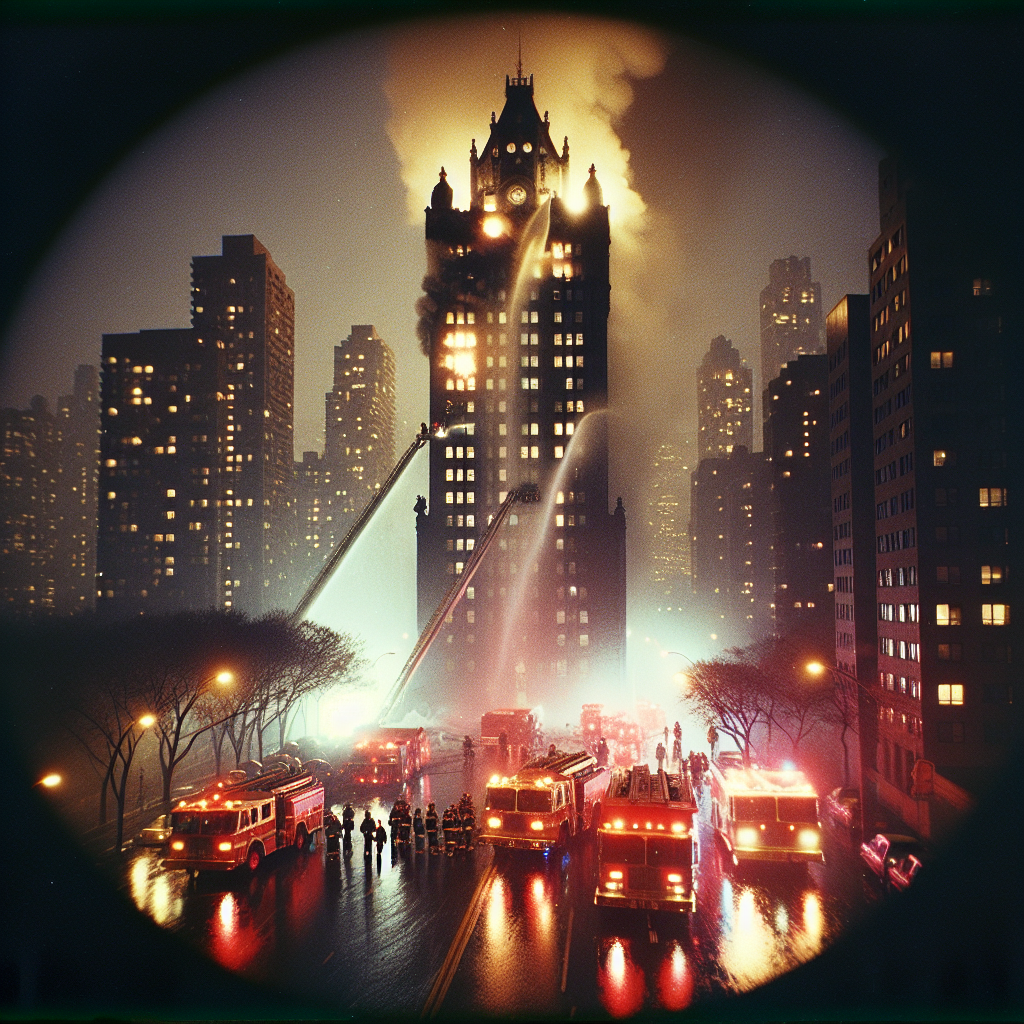High-Rise Fire Quickly Contained to Single Floor in City
A potentially disastrous fire in a high-rise building was swiftly contained to a single floor, thanks to the rapid response and coordinated efforts of city firefighters and emergency services. This incident, which could have escalated into a full-blown catastrophe, instead serves as a testament to the effective disaster preparedness and prompt action that can save lives and property.
Immediate Response from Firefighters
At approximately 2:30 PM on Tuesday, a fire alarm was triggered in a high-rise building in the downtown area. Within minutes, the city’s fire department was on the scene. Eyewitnesses reported seeing thick smoke billowing from the 12th floor of the building. Evacuation procedures were immediately initiated by building management, ensuring that occupants were swiftly moved to safety.
The quick arrival of firefighters and their ability to rapidly assess and act on the situation was pivotal. Firefighters managed to isolate the fire to the 12th floor, preventing it from spreading to other parts of the building. This was achieved through a combination of modern firefighting techniques, effective communication, and specialized equipment designed for high-rise building fires.
Advanced Firefighting Techniques
The use of advanced firefighting techniques and equipment played a crucial role in containing the fire. Some of the key methods and tools utilized included:
- High-Rise Hose Packs: Firefighters employed hose packs specifically designed for high-rise buildings, allowing them to reach and combat the fire more effectively.
- Ventilation Fans: These fans were used to remove smoke and toxic gases from the building, improving visibility and reducing the risk of smoke inhalation for both firefighters and occupants.
- Thermal Imaging Cameras: These cameras helped locate the fire’s source and any potential hotspots that could reignite, ensuring a thorough and efficient containment.
Building’s Safety Features
The building itself was equipped with several safety features that aided in the quick containment of the fire. These features included a state-of-the-art sprinkler system and fire alarms, which played a critical role in alerting occupants and initiating evacuation well before the fire could spread.
Community and Emergency Services Collaboration
The incident highlighted the importance of collaboration between emergency services and the community. Building management’s swift action in evacuating occupants, combined with the proactive measures taken by the fire department, showcased a model of cooperation that can mitigate the impact of such emergencies.
- Regular Fire Drills: Conducted by the building’s management, these drills ensured that all occupants were familiar with evacuation procedures and acted quickly and orderly when the alarm was raised.
- Emergency Services Coordination: Close communication between the fire department, police, and medical responders ensured that everyone worked towards a unified goal of safety and containment.
Public Awareness and Education
This incident serves as a reminder of the importance of public awareness and continuous education regarding fire safety. Knowing what to do in case of a fire, understanding the importance of not using elevators during a fire alarm, and being familiar with the location of emergency exits can save lives. The fire department has emphasized the following tips:
- Stay Calm: Panic can lead to mistakes. Staying calm and focused improves chances of a safe escape.
- Use Stairs: Always use the stairs, not elevators, during a fire evacuation.
- Know Your Exits: Be familiar with all possible exits from your building or place of work.
- Report Hazards: Immediately report any fire hazards or non-functioning safety equipment to building management or authorities.
Future Preventative Measures
In the aftermath of the fire, city officials and building management are working together to review safety protocols and ensure they are updated and strictly enforced. Some of the key initiatives being discussed include:
- Regular Inspections: Increasing the frequency of fire safety inspections to ensure all equipment is functioning correctly.
- Enhanced Training: Providing additional training for building staff and occupants on fire safety and emergency procedures.
- Community Engagement: Organizing more outreach programs to educate the public on fire safety and emergency preparedness.
Conclusion
Ultimately, the quick containment of the high-rise fire to a single floor is a success story of preparedness, advanced techniques, and community cooperation. It serves as a crucial reminder of the importance of continuous vigilance, regular safety checks, and public awareness in preventing and managing fire emergencies. The coordinated efforts of firefighters, building management, and emergency services undoubtedly prevented what could have been a much more tragic event.
With safety protocols continually evolving, it’s essential for businesses and residents to stay updated on the best practices for fire safety. For those operating in the restaurant industry, particularly with the potential hazards in commercial kitchens, regular hood cleaning can be an effective preventative measure to ensure the safety of their premises. It is a vital part of maintaining a safe environment not just for staff, but for everyone involved.









